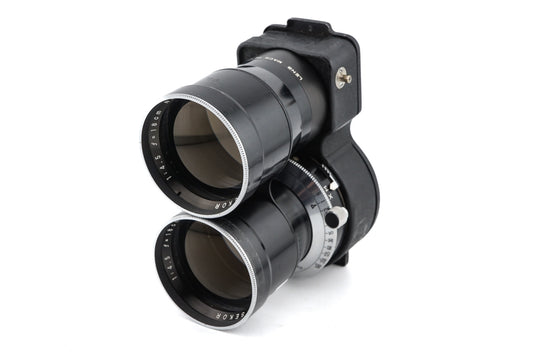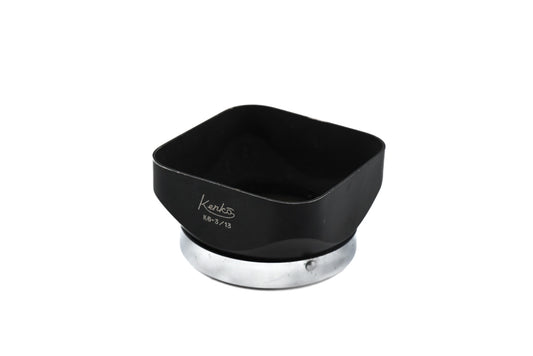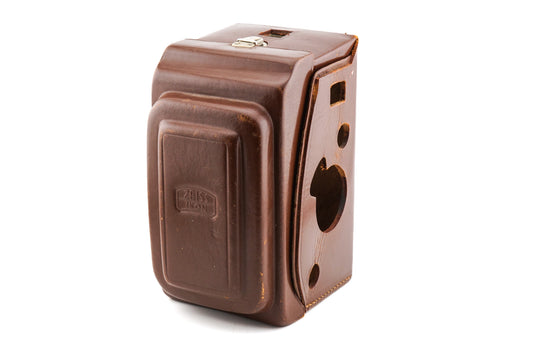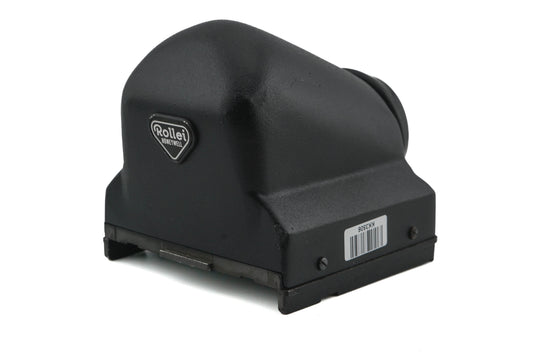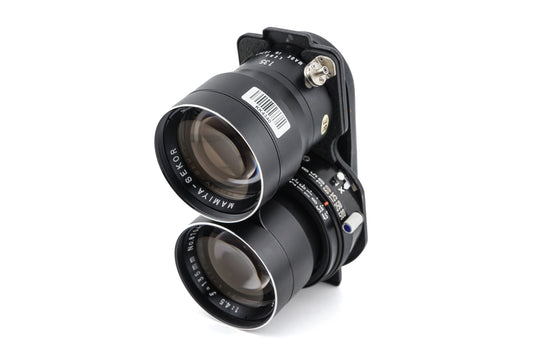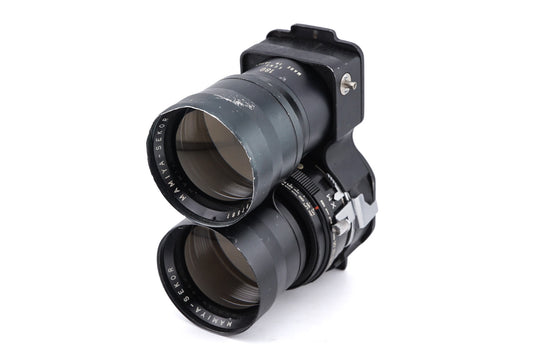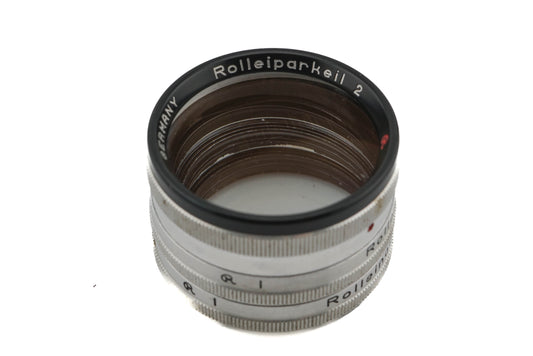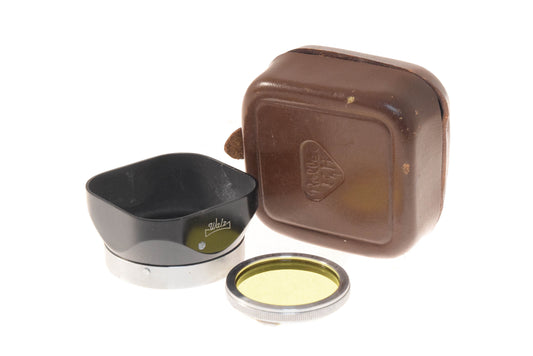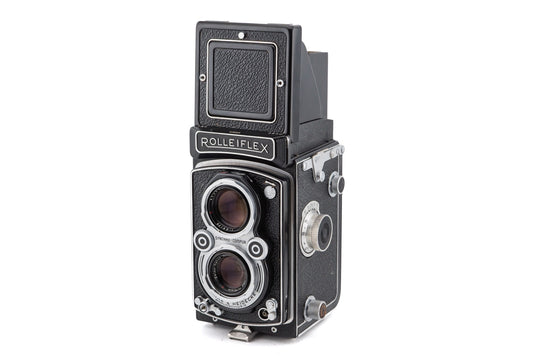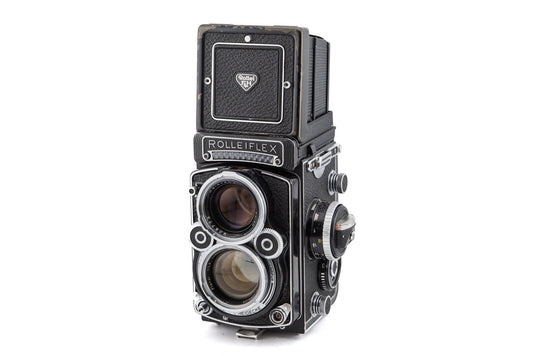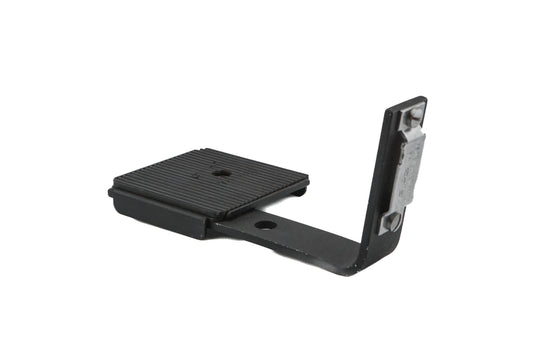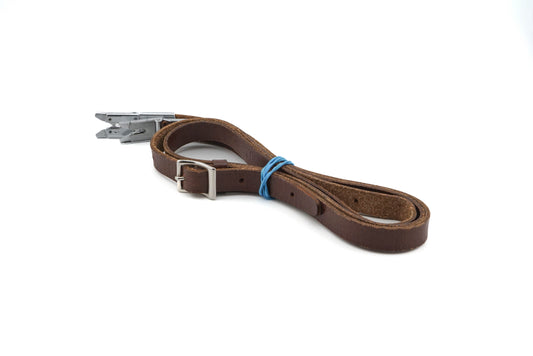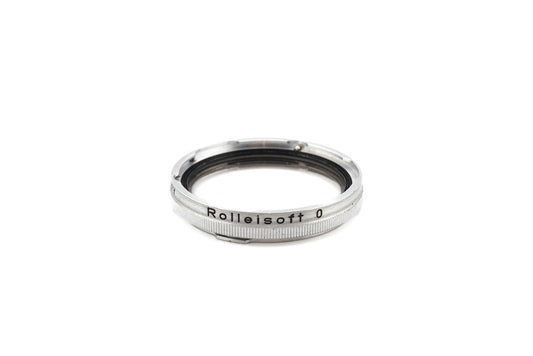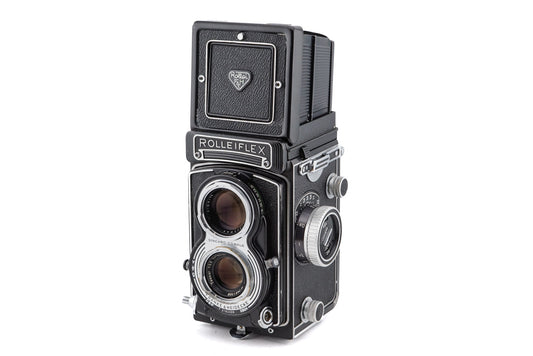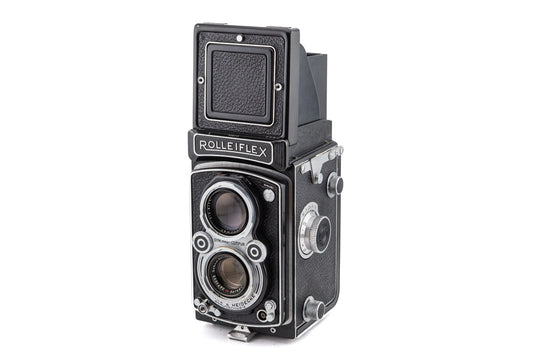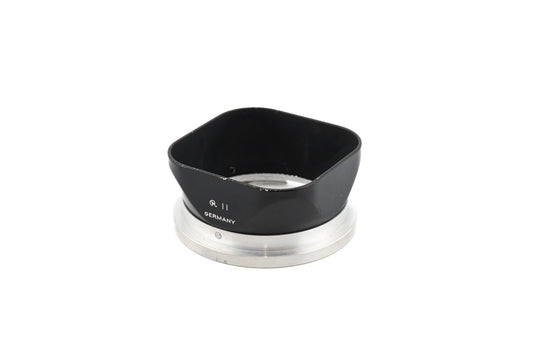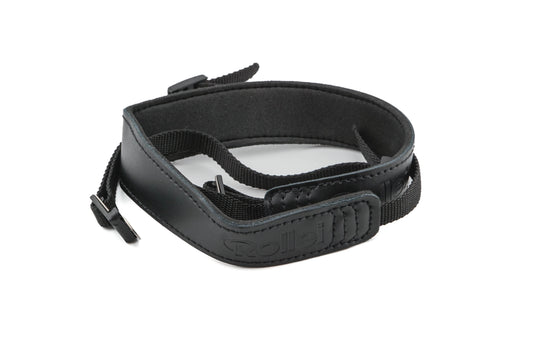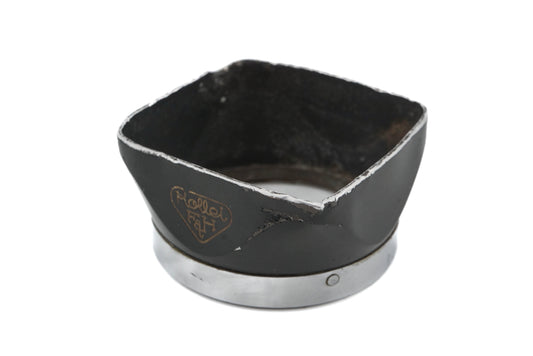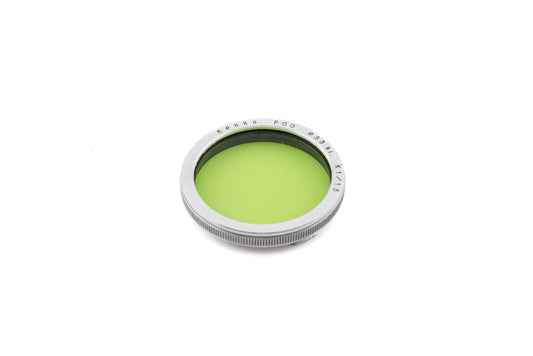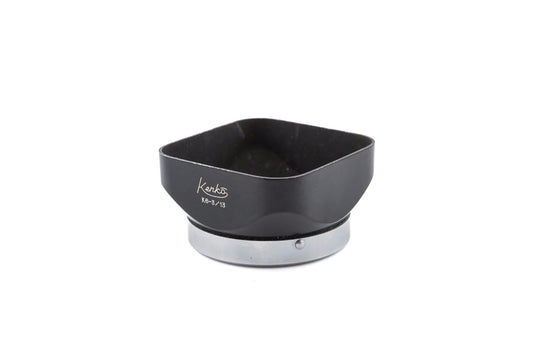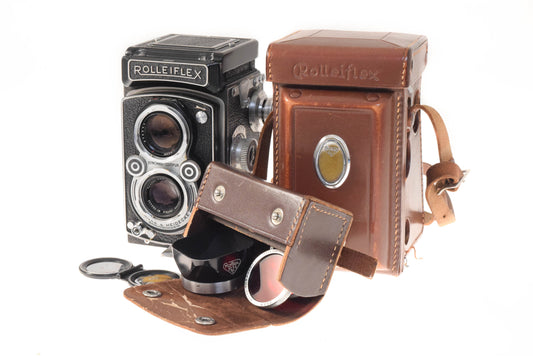- ›
- Cameras ›
- Film Cameras ›
- Medium Format Film Cameras ›
- TLR ›
- nb4n
Kamerastore Digital Database
Zeiss Ikon Ikoflex 1C 886/16 - Camera
Zeiss Ikon Ikoflex 1C 886/16 - Camera
Zeiss Ikon medium format TLR introduced in 1956. Taking lens is a 75mm f3.5 Tessar. The camera has a selenium cell exposure meter.

TLR
Twin-Lens Reflex (TLR) cameras are defined by having two lenses. One lens is used for taking images and the other is for viewing, focusing, and framing your photos. The lenses are synchronized and the same focal length to allow for proper framing and focusing.
Normally, the viewing lens redirects light upwards towards a waist level viewfinder and the lower lens exposes the film using a built-in leaf shutter. Because of the way this system works the image in the viewfinder is flipped horizontally, which can take some time to get used to. There are also slight differences in framing between the two lenses that can affect images at close focusing distances.
Most TLRs take 6x6cm images on 120 medium format roll film, although some could also use now-discontinued 220 film. Many companies made TLRs, including Yashica, Minolta, and Zeiss Ikon. The most famous TLR brand, though, is Rollei.
The Rolleicord and Rolleiflex cameras are the definitive TLR designs, with all others taking major inspiration from them. These cameras pair world-class build quality with legendary Carl Zeiss & Schneider-Kreuznach lenses to make an excellent, if expensive, camera.
TLRs are iconic ”old school” cameras, used as the primary camera of journalists and documentary photographers for decades before 35mm SLRs took over. Most people will recognize a TLR as an ”old camera” and many will be intrigued by its strange (by today’s standards) two-lens design.
DHW Fototechnik is still making Rolleiflex TLRs today in Germany.
-
Vendor:TLR
Aires Reflex Z
Regular price €20,00 EURRegular priceUnit price / per -
Vendor:TLR
Meopta Flexaret IV
Regular price €30,00 EURRegular priceUnit price / per -
Vendor:TLR
Mamiya 18cm f4.5 Sekor
Regular price €199,00 EURRegular priceUnit price / per -
Vendor:TLR
Kenko Bay I Lens Hood K6-3/13
Regular price €19,00 EURRegular priceUnit price / per -
Vendor:TLR
Zeiss Ikon Leather Case for Ikoflex Ia (1224/16)
Regular price €49,00 EURRegular priceUnit price / per -
Vendor:TLR
Filter Adapter Ring with UV Filter for TLR Cameras
Regular price From €35,00 EURRegular priceUnit price / per -
Vendor:TLR
Rollei Rolleiflex Prism Finder
Regular price €175,00 EURRegular priceUnit price / per -
Vendor:TLR
Mamiya 135mm f4.5 Sekor "Blue Dot"
Regular price €175,00 EURRegular priceUnit price / per -
Vendor:TLR
Mamiya 18cm f4.5 Sekor
Regular price €65,00 EURRegular priceUnit price / per -
Vendor:TLR
Rollei Rolleiflex Automat Model 4 (K4A)
Regular price €450,00 EURRegular priceUnit price / per -
Vendor:TLR
Rollei Bay I Rolleinar 2
Regular price €69,00 EURRegular priceUnit price / per -
Vendor:TLR
Walz Bay I Lens Hood + Bay I Yellow Filter SY 48 2C K1/13
Regular price €34,00 EURRegular priceUnit price / per -
Vendor:TLR
Rollei Rolleiflex Automat Model 4 (K4A)
Regular price €899,00 EURRegular priceUnit price / per -
Vendor:TLR
Rollei Rolleiflex 2.8 F
Regular price €2.899,00 EURRegular priceUnit price / per -
Vendor:TLR
Rollei Reflex Flash Bracket With Base Plate
Regular price €25,00 EURRegular priceUnit price / per -
Vendor:TLR
Rollei Rolleiflex Neck Strap
Regular price €45,00 EURRegular priceUnit price / per -
Vendor:TLR
Rollei Bay II Softness Filter Rolleisoft 0
Regular price €15,00 EURRegular priceUnit price / per -
Vendor:TLR
Rollei Rolleiflex 3.5 T (Model K8 T1)
Regular price €899,00 EURRegular priceUnit price / per -
Vendor:TLR
Rollei Rolleiflex Automat Model 4 (K4A)
Regular price €799,00 EURRegular priceUnit price / per -
Vendor:TLR
Rollei Bay II Lens Hood
Regular price €69,00 EURRegular priceUnit price / per -
Vendor:TLR
Rollei Rolleiflex Neck Strap
Regular price €45,00 EURRegular priceUnit price / per -
Vendor:TLR
Rollei Bay I Lens Hood
Regular price €25,00 EURRegular priceUnit price / per -
Vendor:TLR
Kenko Bay I Green Filter POO K1/13
Regular price €5,00 EURRegular priceUnit price / per -
Vendor:TLR
Kenko Bay I Lens Hood K6-3/13
Regular price €19,00 EURRegular priceUnit price / per -
Vendor:TLR
Rollei Rolleiflex Automat Model 4 (K4A)
Regular price €899,00 EURRegular priceUnit price / per




